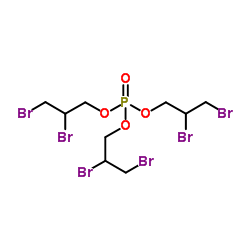Tris(2,3-dibromopropyl)phosphate causes a gradient of mutations in the cortex and outer and inner medullas of the kidney of lacI transgenic rats.
J G de Boer, J Holcroft, M L Cunningham, B W Glickman
Index: Environ. Mol. Mutagen. 36(1) , 1-4, (2000)
Full Text: HTML
Abstract
Tris(2,3-dibromopropyl)phosphate (TDBP) is a kidney carcinogen in rats in which exposure results in tumors specifically in the outer medulla. We have previously shown that TDBP induces mutation in the rat kidney. Here we demonstrate that TDBP induces mutation in the kidney of the F344 Big Blue lacI transgenic rat in a gradient with the highest induction (6.4-fold) in the cortex and lowest induction (2.2-fold) in the inner medulla, when given at 2000 ppm in the feed for 45 days. Similar results were obtained at 100 ppm, although the gradient effect was less pronounced. Because exposure to TDBP results in increased cell proliferation in the outer medulla, our results suggest that tissue-specific targeting of TDBP-induced kidney tumors reflects the combination of cell proliferation and mutation induction. This is also the first known case when transgenic animals have been used to study mutation at the suborgan level.Copyright 2000 Wiley-Liss, Inc.
Related Compounds
| Structure | Name/CAS No. | Molecular Formula | Articles |
|---|---|---|---|
 |
Tris(2,3-dibromopropyl) phosphate
CAS:126-72-7 |
C9H15Br6O4P |
|
Haloalkylphosphorus hydrolases purified from Sphingomonas sp...
2014-09-01 [Appl. Environ. Microbiol. 80(18) , 5866-73, (2014)] |
|
Spatial distribution and inter-year variation of hexabromocy...
2013-01-01 [Chemosphere 90(2) , 182-7, (2013)] |
|
Use of log-linear analysis to construct explanatory models f...
1999-03-10 [Mutat. Res. 425(1) , 55-69, (1999)] |
|
Mutagenic response to benzene and tris(2,3-dibromopropyl)-ph...
1996-01-01 [Environ. Mol. Mutagen. 28(4) , 342-7, (1996)] |
|
The application of cytogenetics and fluorescence in situ hyb...
2010-06-25 [Cancer Cytopathol 118(3) , 137-45, (2010)] |